Castellans of Valeria is a clever area control game that’s all about timing
It’s been a while since we last reviewed a game from the Valeria universe, but whenever I’ve played a game in this series, I’ve always been fairly impressed. Whilst most of the Valeria games are card driven, Castellans of Valeria is a fully fledged board game, with a beautiful main board, dual-layer player boards and loads of lovely, screen-printed wooden buildings.
Castellans of Valeria is set in the western city of Kosk — this has almost no relevance to the gameplay, but the game does come with a fairly large booklet which explains the setting and theme. Broadly paraphrased, the players are castellans in the city that have come under scrutiny. The leader isn’t sure that you’re all doing a fantastic job, and now you must compete to demonstrate who is best — pretty standard stuff.
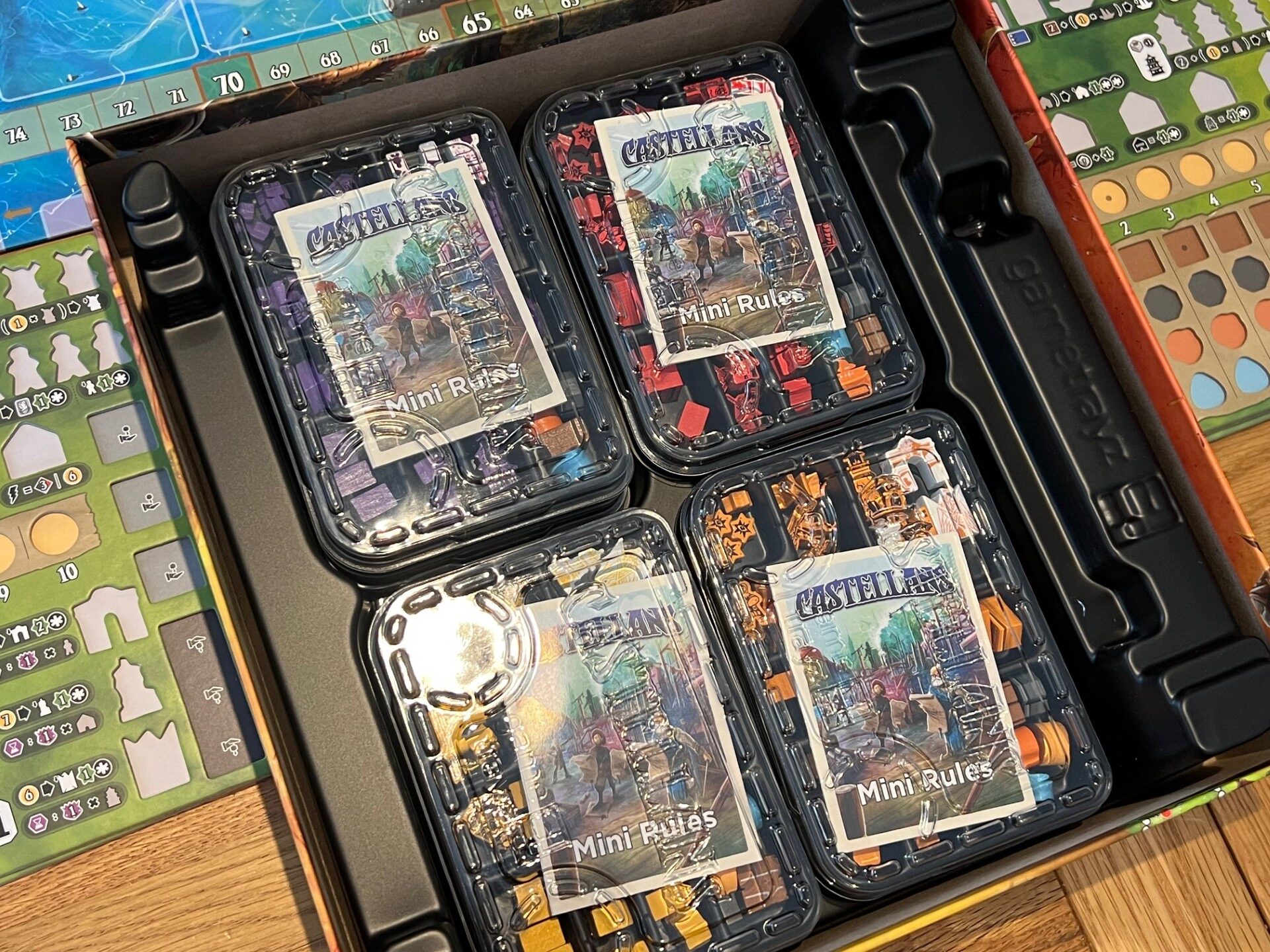
To do this, the players will roll and draft dice which will help them generate wood, stone, food, magic and money. They will then use the drafted dice to take actions, often boosting those actions when an action taken matches the face of the die being used. Every action is different, but each one will allow some combination of building placement, advancement in one of four guilds, recruitment of a citizen or trading of resources one way or another.
The city of Kosk is split into six regions, and over the five rounds of the game, each region will be scored exactly twice. This is important, because scoring for each region is based on how much influence you have there — with influence linked in a fairly straightforward way to how many buildings (and recruits) you have placed there.
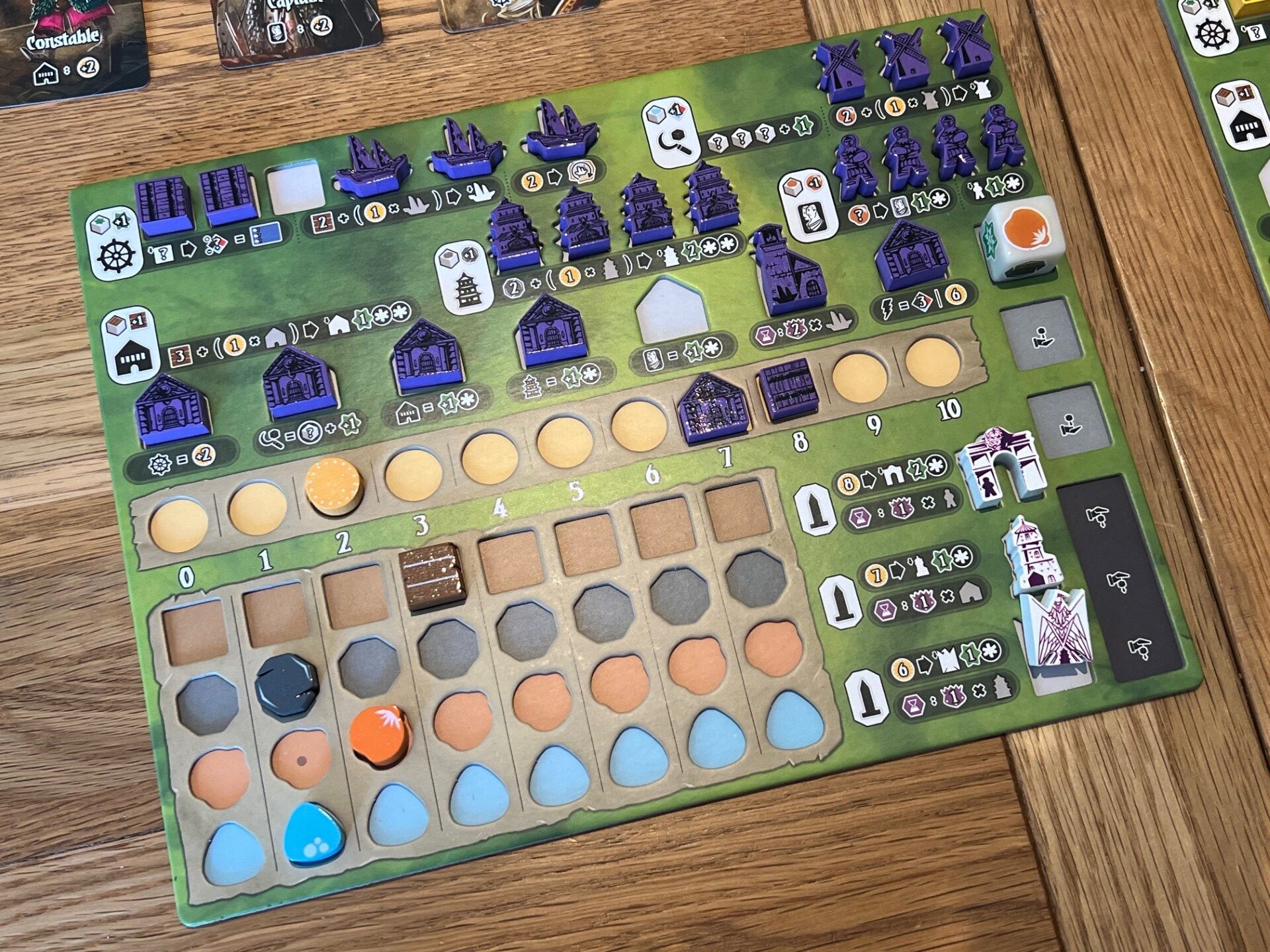
Castellans of Valeria is the kind of game that I really like. The premise is fairly simple, with points coming mainly from the area influence piece and then to a lesser extent the influence tracks and wharf cards. There’s no hidden scoring here and so whilst I wouldn’t call Castellans of Valeria an entry level game, it is a game that is made considerably easier to process thanks to how clear the route to victory is.
In terms of actually taking a turn, there can be a lot to think about in Castellans of Valeria however. Players will start the game looking down at a personal board packed with manors, windmills, recruits and other buildings — each of which is then tied to an action and usually, a resource type.
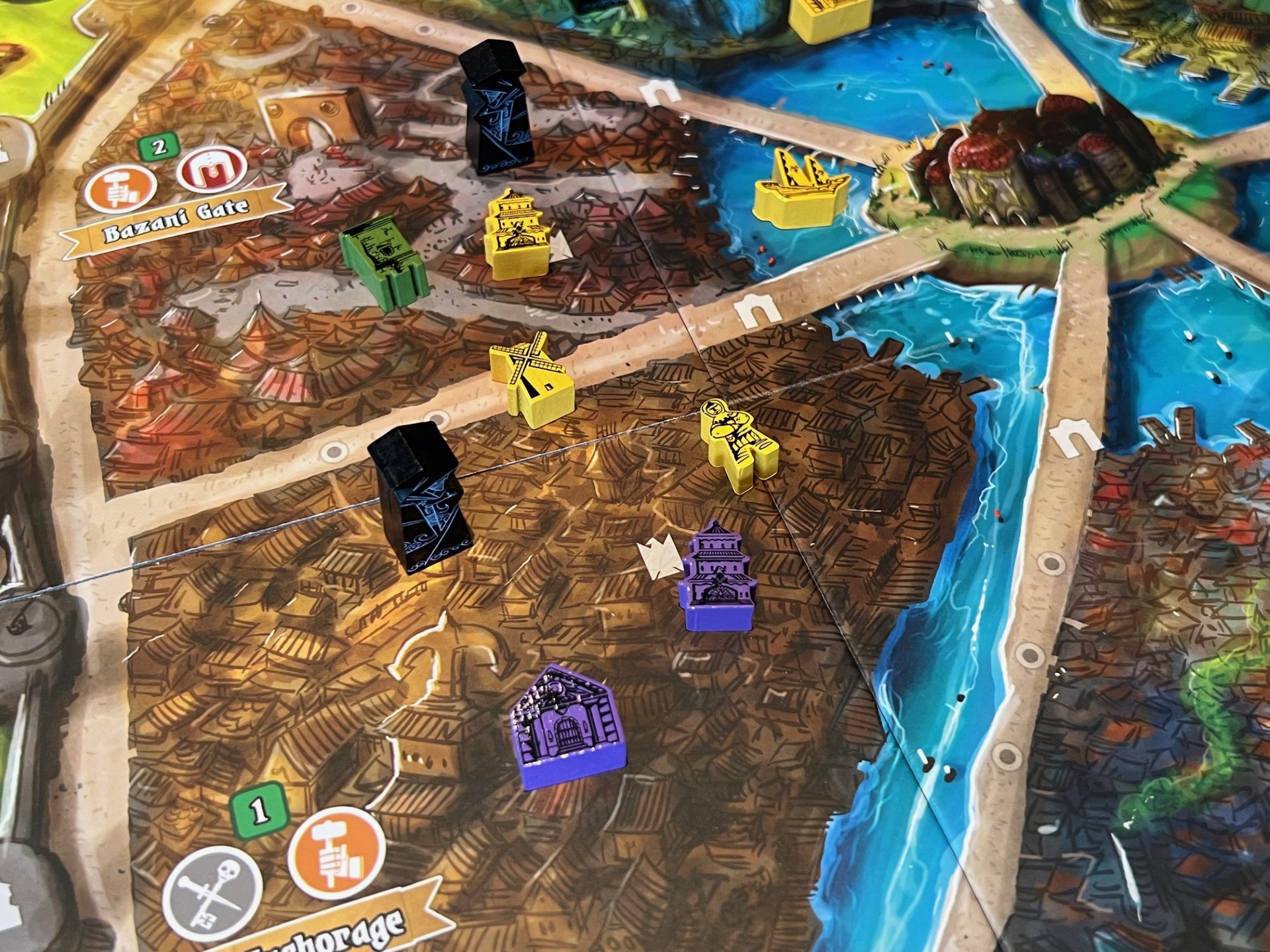
Players will take three “main” actions per round, and may also build a monument as a free action if they have the resources. To represent their actions, players will use the dice that were drafted at the start of the round, and if the dice used matches that shown on the action, they’ll get a bonus resource. Almost all actions allow the player to do “something” and to place a building — for example taking the temple action will allow the player to gain guild influence and build a temple, and if the die used was an influence die, they’ll get a bonus guild influence.
When scoring comes around (at the end of each action phase) players will look at the three regions that will score this turn, they’ll calculate all of the influence in the region (for all players) and then based on who was first, second etc, they’ll distribute points accordingly. Most buildings contribute one point of influence, however some buildings such as windmills change this — with windmills sitting between two regions and adding half a point to each, and monument buildings each having scoring criteria of their own. Wharf cards are also scored at this point, and these link to trade actions taken that round.
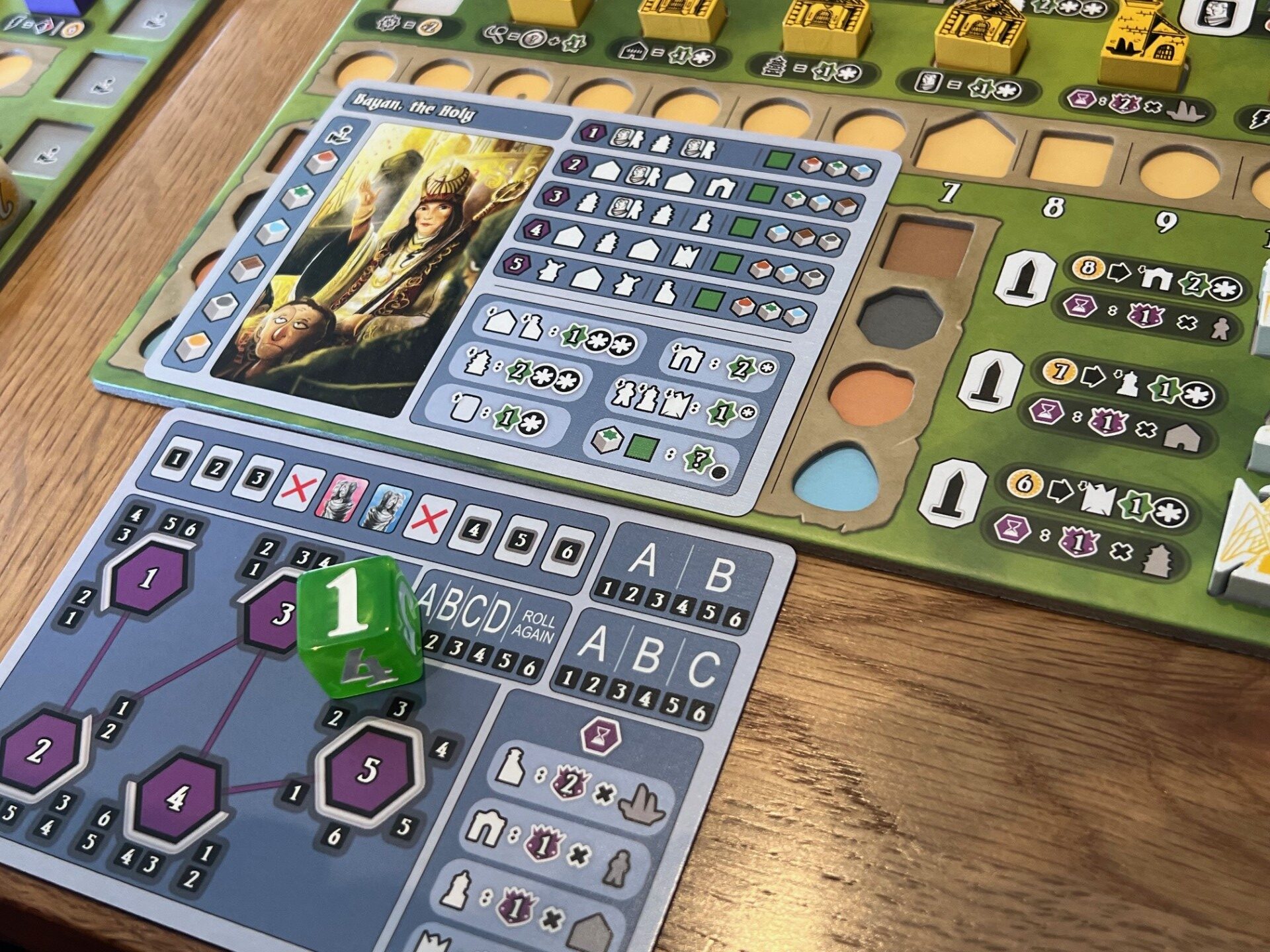
Recruiting characters is also good fun in Castellans of Valeria and makes for one of the most interesting actions because it works in a slightly different way. When a recruit action is performed, the player will place a recruit meeple (one influence) as with any building, but they’ll also pay food to recruit one of the red or blue backed cards in the current market. The cost depends on the placement of the card on the current market track, and each card has its own interesting effect.
Most of the red backed cards are for use earlier in the game, with many giving the player benefits that improve or optimise their resource engine — perhaps by allowing the player to change the face of a die they drafted either when it is drafted, or when it is used for an action. Cards with a blue back are often better later in the game, and might allow you to enhance an action by spending more resources to take an extra bonus.
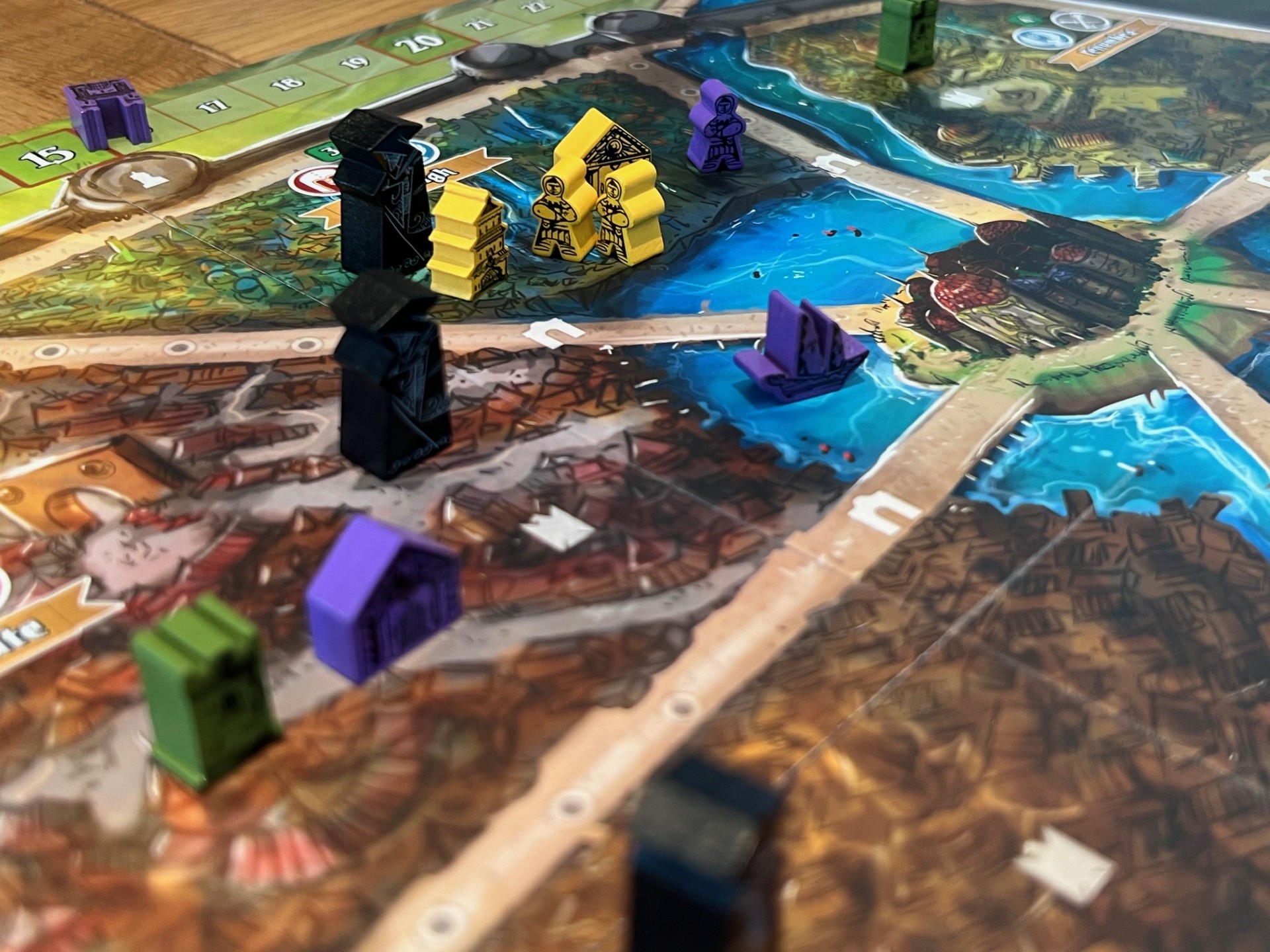
Setup and teardown for Castellans of Valeria is made super simple thanks to a brilliant set of Gametrayz inserts. There’s an individual tray for each player, and besides that the only components are player boards, the main board and then a very small number of other components and cards for things like solo play and to help fill out the board with neutral influence at lower player counts.
Whilst I do enjoy Castellans of Valeria, I think my only criticism of it is that it has a relatively low ceiling. It’s enjoyable and thoughtful, but it doesn’t have really deep, complex systems that will keep you awake at night wondering how to tackle the game next time. This is fine, to be honest, as not everyone wants or needs Vital Lacerda levels of complexity in their games, and the accessibility of Castellans of Valeria relative to its weight is most welcome.
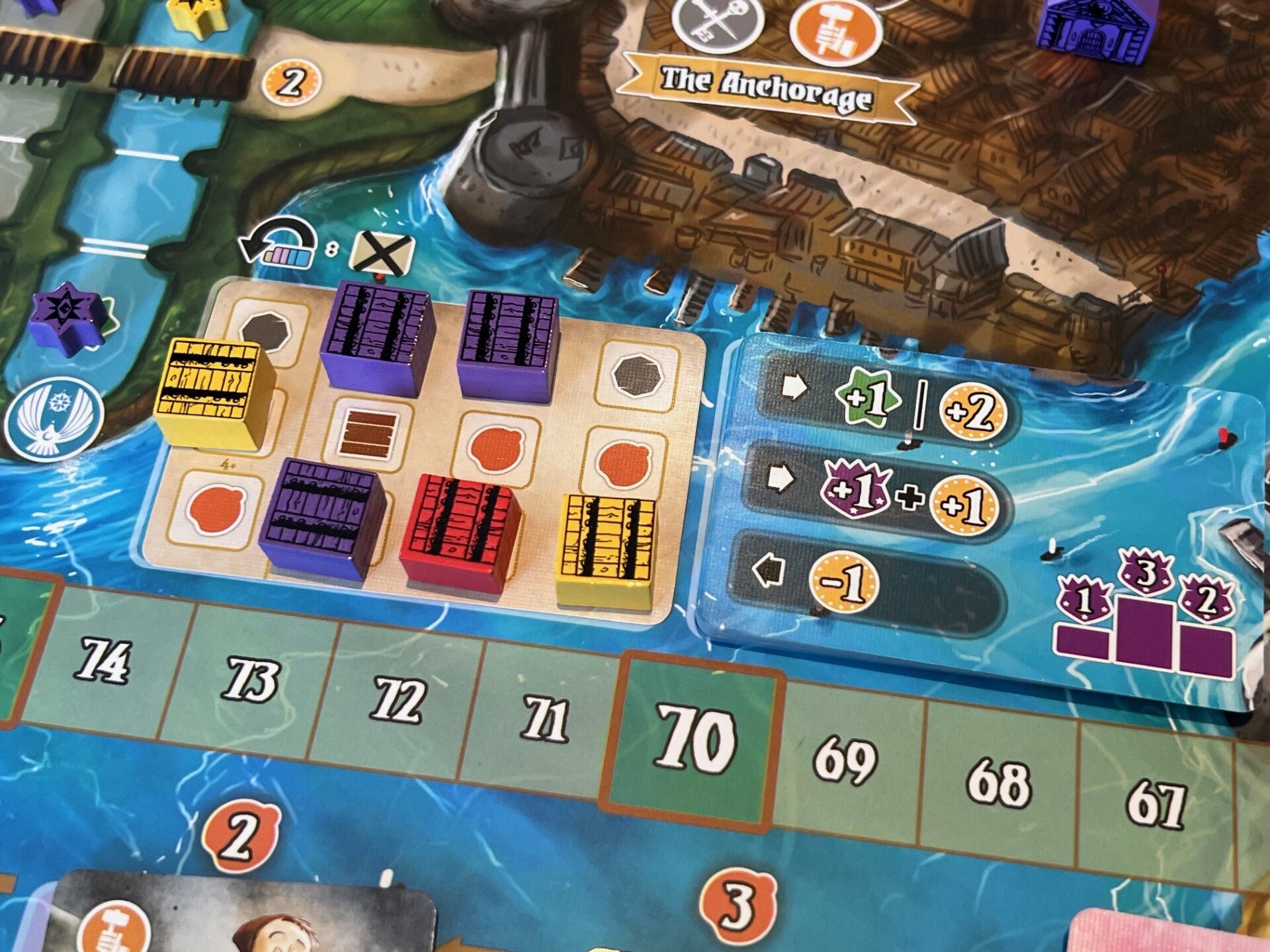
Overall then, I think Castellans of Valeria is a solid addition to any collection, but is perhaps more suitable for those who enjoy midweight games that come with simple, solid rulesets and result in a relatively predictable 90 minute (ish) experience. The scoring is clear and satisfying, and whilst the decisions are pretty much focussed on your own board and dice, the area control element is absolutely all about interaction and timing — with lots of opportunities to step in and “win” an area on the last round of actions.
You can purchase Castellans of Valeria on Kickstarter.
Comments are closed.